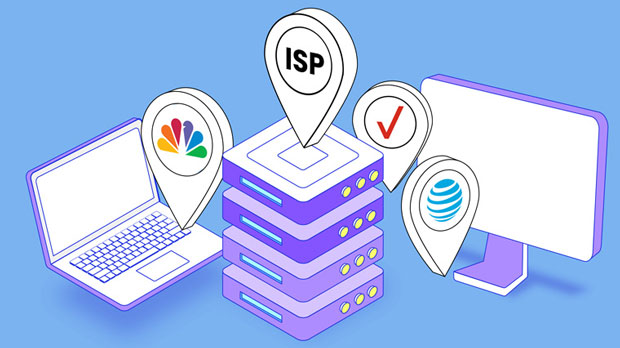How to do pricing monitoring and competitive analysis with Proxy Residential Socks5?
Price monitoring and competitive analysis are critical strategies for businesses aiming to stay competitive in today’s rapidly evolving digital marketplace. One effective tool for gathering real-time pricing information and analyzing competitors’ strategies is the use of residential socks5 proxies. These proxies allow companies to access websites as though they were browsing from different geographical locations, providing an advantage in tracking competitor prices, market fluctuations, and identifying trends. In this article, we will explore how residential Socks5 proxies can be used effectively for price monitoring and competitive analysis, offering a detailed overview and practical guidance on leveraging these tools for business success. Introduction to Residential Socks5 ProxiesResidential Socks5 proxies are specialized proxies that route traffic through real residential IP addresses, making it more difficult for websites to detect them as proxy traffic. Unlike datacenter proxies, which come from centralized servers and are often blacklisted, residential proxies blend in with regular internet traffic. This makes them ideal for tasks such as price monitoring and competitive analysis, as they can access data from websites without triggering security measures designed to block automated systems. By using residential Socks5 proxies, businesses can access global pricing information and monitor competitor actions discreetly, without the limitations of traditional data scraping techniques. In this section, we will discuss the importance of Socks5 proxies in the context of competitive analysis and pricing strategies.Why Use Residential Socks5 Proxies for Price Monitoring?Price monitoring is an essential aspect of staying competitive, particularly in industries with frequent price fluctuations, such as e-commerce, retail, and travel. Monitoring competitor prices manually is time-consuming and inefficient, and without automated tools, it can be difficult to track the vast array of price changes happening across multiple websites. Residential Socks5 proxies offer a solution to this problem by allowing businesses to automate their price scraping efforts.One of the main reasons to use Socks5 proxies for price monitoring is their ability to provide anonymity. Since they use real residential IP addresses, they appear as regular users to the target websites. This reduces the risk of being blocked or flagged as a bot by security systems, which often target IPs with frequent, automated traffic. This anonymity is crucial for businesses that need to collect data from competitor websites regularly, without being detected or banned.Furthermore, Socks5 proxies enable businesses to access geolocation-specific pricing information. Many companies use dynamic pricing strategies, where prices vary based on the customer's location. By using residential proxies from different regions, businesses can collect a wider range of pricing data, gaining insight into how competitors price their products in various locations. This geographical advantage can be instrumental in developing more effective pricing strategies and positioning products in different markets.How Residential Socks5 Proxies Facilitate Competitive AnalysisCompetitive analysis is another key benefit of using residential Socks5 proxies. In today’s marketplace, it is essential for businesses to monitor competitor activities in real-time, track changes to their product offerings, and analyze pricing strategies. By using these proxies, companies can observe how competitors respond to market changes, identify emerging trends, and even detect vulnerabilities in competitors’ pricing models.When used for competitive analysis, residential Socks5 proxies enable businesses to gather information from competitor websites without alerting them to the fact that the traffic is being analyzed. This helps ensure that competitors cannot take countermeasures to prevent their data from being collected, such as altering their website layout, changing pricing strategies, or blocking specific IP addresses. This level of discretion is vital for businesses that need to stay ahead of their competitors in an ever-changing market.In addition to tracking competitor pricing, residential proxies can also be used to gather other critical data such as product descriptions, images, and reviews. This information can provide valuable insights into how competitors market their products and interact with their customers. Understanding this information allows businesses to refine their own marketing strategies and improve their product offerings.Automating Price Monitoring and Competitive AnalysisUsing residential Socks5 proxies can be particularly effective when paired with automated tools designed for price monitoring and competitive analysis. These tools enable businesses to set up regular, automated scraping tasks that collect pricing data and competitor information at scheduled intervals. Automating this process allows businesses to gather vast amounts of data without manual effort, improving both efficiency and accuracy.For price monitoring, automation tools can track fluctuations in product prices across different websites, alerting businesses when significant changes occur. This allows businesses to adjust their pricing strategies in real-time to stay competitive. Automated tools can also track the prices of specific products, brands, or categories, ensuring that businesses are always aware of how their offerings compare to competitors.For competitive analysis, automation tools can track changes in competitors’ product catalogs, pricing strategies, and promotional activities. By monitoring competitor websites regularly, businesses can detect any new product launches, updates, or changes in marketing tactics. Automation enables businesses to gather this information consistently, without the need for manual intervention, and analyze it more effectively.Challenges and Best Practices in Using Residential Socks5 ProxiesWhile residential Socks5 proxies offer significant benefits for price monitoring and competitive analysis, there are also challenges associated with their use. One of the main challenges is ensuring that the proxies are of high quality and that they are rotated regularly. Poor-quality proxies may be slow or unreliable, which can affect the accuracy and efficiency of data collection. Therefore, it is important to choose reliable proxy services that offer high-quality residential IP addresses with fast connection speeds.Another challenge is the potential for IP blocking, even with residential proxies. While these proxies are less likely to be flagged as bots compared to datacenter proxies, websites may still implement anti-scraping measures such as rate limiting or CAPTCHA systems. To avoid detection, businesses should use a combination of IP rotation, CAPTCHA solving techniques, and scraping best practices to ensure continuous access to competitor data.Best practices for using residential Socks5 proxies include regularly rotating IPs to avoid detection, using a variety of proxies from different regions to gather diverse data, and ensuring compliance with website terms of service to avoid legal complications. Additionally, businesses should use secure and reliable scraping tools to ensure that data is collected efficiently and accurately.ConclusionResidential Socks5 proxies play a pivotal role in modern price monitoring and competitive analysis strategies. By enabling businesses to access real-time pricing data from competitor websites, these proxies provide valuable insights into market trends and competitor behavior. When used in combination with automated tools, residential Socks5 proxies can significantly enhance efficiency and accuracy, allowing businesses to stay ahead of the competition.To maximize the benefits of using these proxies, businesses must follow best practices, ensuring high-quality proxy rotation, efficient data collection, and compliance with legal guidelines. Ultimately, using residential Socks5 proxies for price monitoring and competitive analysis can provide businesses with the critical edge they need to thrive in a competitive marketplace.
2025-01-14

























































